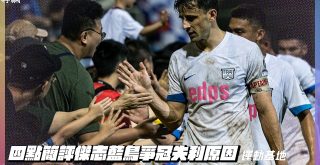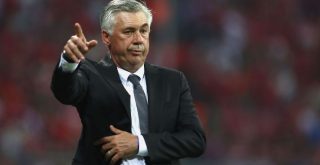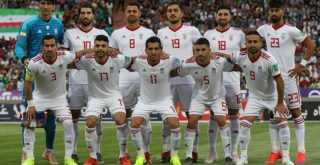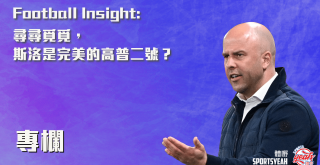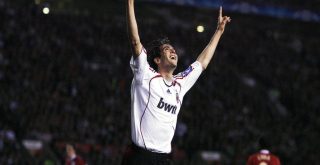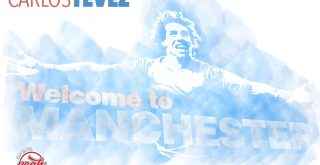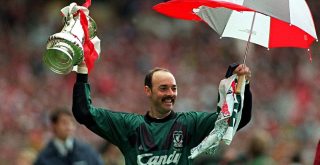Michael Cox談2010年代二十支戰術創新球隊(1):維拉利爾
As we near the end of the decade, The Athletic presents the first in a 20-part series assessing the most memorable, significant and tactically-innovative sides of the 2010s. First up, Villarreal 2010-11…
It’s difficult not to have a soft spot for Villarreal, an almost unique overachiever in European football.
Based in a Spanish city of just 50,000 people, the wonderful stadium El Madrigal feels entirely out of place among the narrow streets of their otherwise entirely unremarkable hometown. They play in a distinctive all-yellow kit, their nickname – El Submarino Amarillo – comes from a Beatles song, and in 2006, their remarkable European Cup run ended when Juan Roman Riquelme, the modern poster boy for elegant, languid football, had a penalty saved in the semi-final against Arsenal. Just 15 years earlier, they’d been in the fourth division.
That dramatic rise owed much to Villarreal’s commitment to a specific playing style, which became more obvious than ever during 2010-11, a campaign where they finished fourth in La Liga.
Their manager during this period was Juan Carlos Garrido, a relative unknown who had been promoted from the club’s B team. He succeeded Ernesto Valverde but was realistically inheriting a side created by Manuel Pellegrini. Both Valverde and Pellegrini would go on to bigger and better things but this remains Garrido’s career highlight and he’s most recently popped up in Egypt, Saudi Arabia, Morocco and the UAE.
Barcelona were, clearly, the greatest exponents of the tiki-taka style that dominated European football during this period but in stylistic terms, Villarreal were their closest challengers. Villarreal pressed from the front, passed out from the back, had midfielders dropping between the centre-backs and played without a fixed centre-forward. On their day, they were magnificent.
The most interesting thing about Villarreal’s technical and tactical sophistication was that it stemmed from a 4-4-2 system, a rarity at a time when 4-3-3 and 4-2-3-1 dominated La Liga and, increasingly, every top-level European league.
The trick was Villarreal’s structured, integrated movement – particularly when they played out from the back. Almost every player had a secondary position: the central midfielders would drop into the back line, which meant the centre-backs spread wide. In turn, the full-backs would push on, which invited the wide midfielders to drift into central positions. Finally, the two forwards would sprint into wider positions. Opponents found themselves dragged out of position when attempting to press and Villarreal would respond by cutting through their lines quickly.
There were several notable players. Goalkeeper Diego Lopez was an ever-present and would later join Real Madrid, where Jose Mourinho controversially selected him ahead of Iker Casillas. The defence featured two players who had just lifted the World Cup, in centre-back Carlos Marchena and left-back Joan Capdevila.
But the real quality was in midfield and attack. The chief holding player was Bruno Soriano, a physical presence who also offered reliable passing into attack. A youth team product who had spent his entire career with Villarreal, his loyalty to the club has been rewarded by the fact he’s still on the books now at age 35 despite missing the entirety of the last two seasons with knee injuries. Bruno was often fielded alongside Marcos Senna, the Brazilian-born holding midfielder who excelled with Spain at Euro 2008, but Villarreal worked the ball forward more quickly when the technically outstanding Borja Valero played alongside him, rather than from wide.
The wide players, though, didn’t stay wide – they drifted between the lines and ended up interchanging positions. One of these players was Cani, who flitted in and out of matches but occasionally did something truly spectacular. The other was Villarreal’s true superstar, Santi Cazorla. He epitomised this side.
Diminutive, with two quick feet – it was difficult to decipher which one he preferred – Cazorla dragged opponents out of position with his movement, slalomed past them with his quick dribbling, and knocked balls in behind them with his delicate passing. He’s now back at the club for a third spell, a remarkable recovery after such severe injury problems at Arsenal.
Up front was yet another player who suffered badly from injuries throughout his career – the brilliant Giuseppe Rossi. The 2010-11 campaign was his best, with 32 goals in all competitions, many of them spectacular and leading Barcelona to move for him before instead turning to Alexis Sanchez. Such was the unusual nature of Villarreal’s system, with the forwards peeling wide, Rossi didn’t always combine directly with his strike partner, Nilmar, but the Brazilian offered a similar blend of speed, movement and finishing from tight angles.
In the first half of 2010-11, Villarreal were excellent. They outplayed opponents with their typical pass-and-move football both home and away, and were one of the very, very few sides who had the bravery to travel to the Nou Camp and take on Barcelona in an open game of attacking football at a time when everyone else parked the bus. They lost 3-1 (video below) but of all Pep Guardiola’s matches with Barca, that was perhaps the most technically impressive – the best example of two Spanish sides playing the possession-based style that had made Spain the capital of world football.
Villarreal’s problem was that they suffered badly from fatigue in the spring. At one point they looked a good bet to finish third in La Liga – then suffered an almighty 5-0 loss at Valencia, their rivals for that slot. Their Europa League campaign also looked extremely promising but then they travelled to Porto in the semi-final first leg and got thrashed 5-1.
That fatigue carried over into the following campaign in a truly spectacular way – not helped by the loss of Cazorla to newly-moneyed Malaga, coached by their former boss Pellegrini, or by Rossi’s injury problems. It was bad enough when their Champions League campaign ended after six defeats out of six in the group stage but Villarreal collapsed so spectacularly in 2011-12 that they were relegated.
It’s difficult to think of another more anomalous campaign in recent European football history – until last season, it was the only one in which they finished below seventh since 2004.
This was a classic cult side. Villarreal had exquisite footballers, a defined footballing philosophy and a unique system. They also suffered badly from injuries, were left with a sense of what might have been, and then crashed dramatically the next season.
It’s that disastrous 2011-12 that provided the best example of Villarreal’s approach. Ultimately, it was only a midfield passing move that ended with an unsuccessful cross, but the precision and interplay is magnificent and the roar of the crowd is evidence of their affinity with Villarreal’s trademark style.
資訊浩瀚;東張西望。
竭盡所能;深入求真。
企高一格;全新體法。
